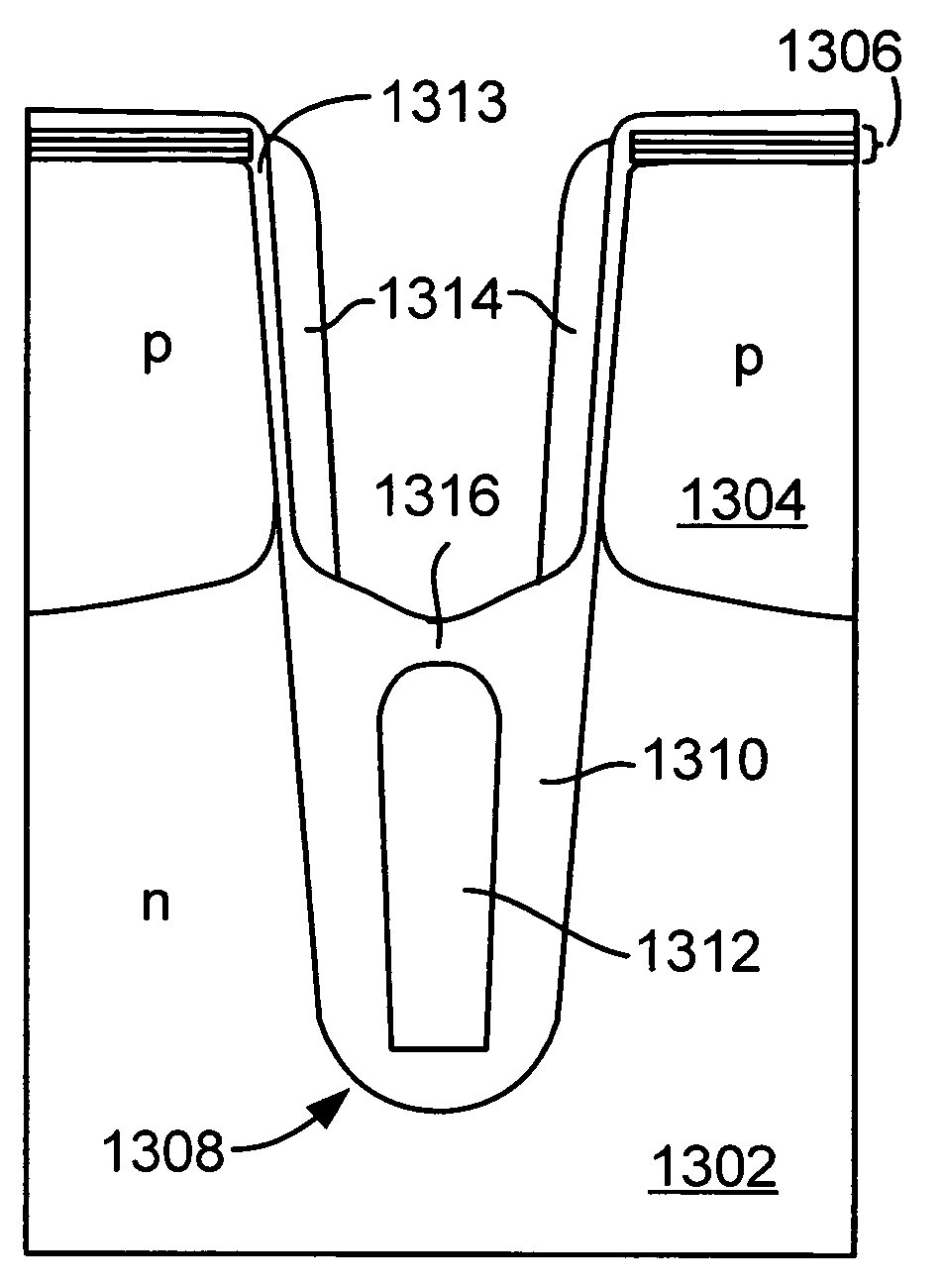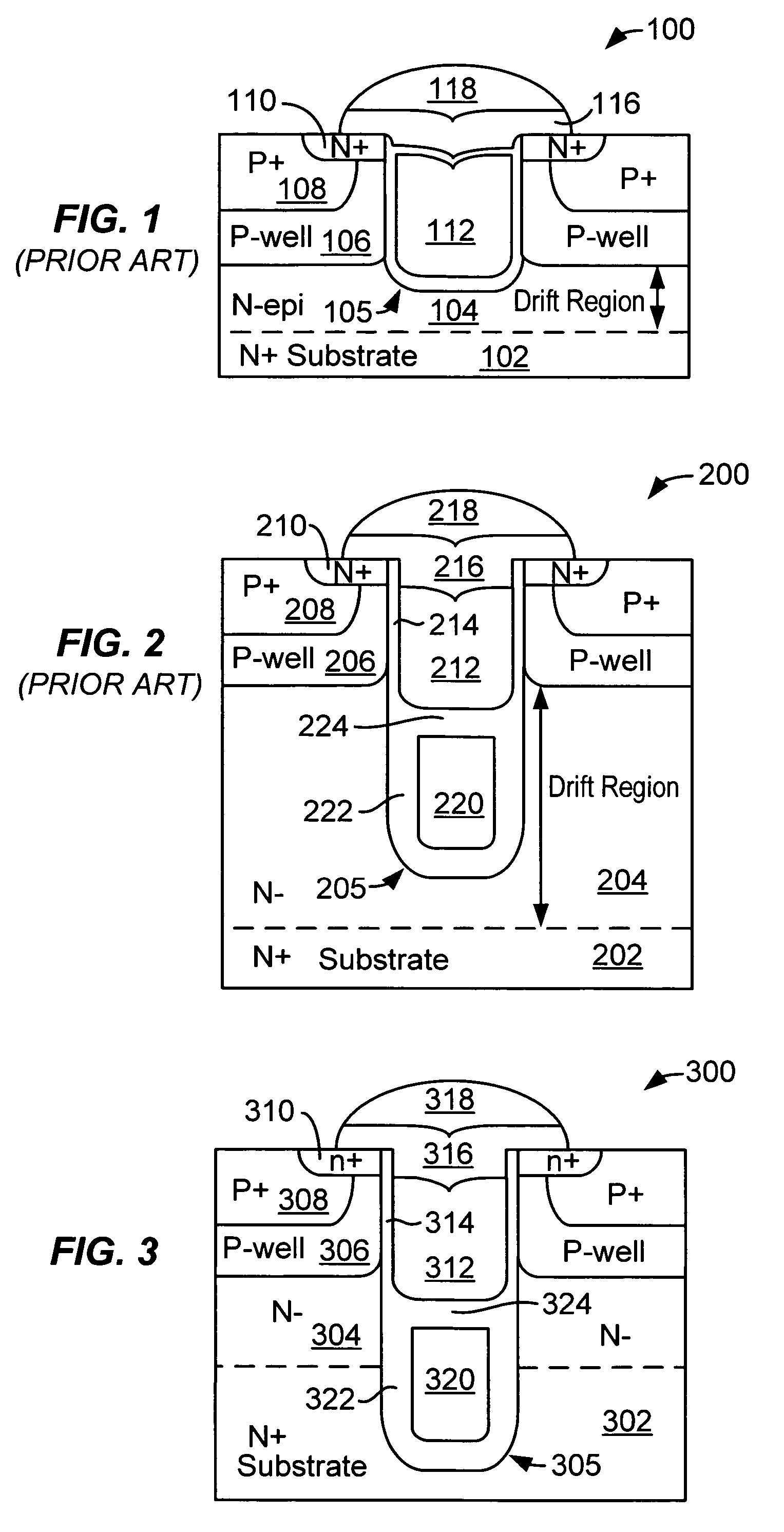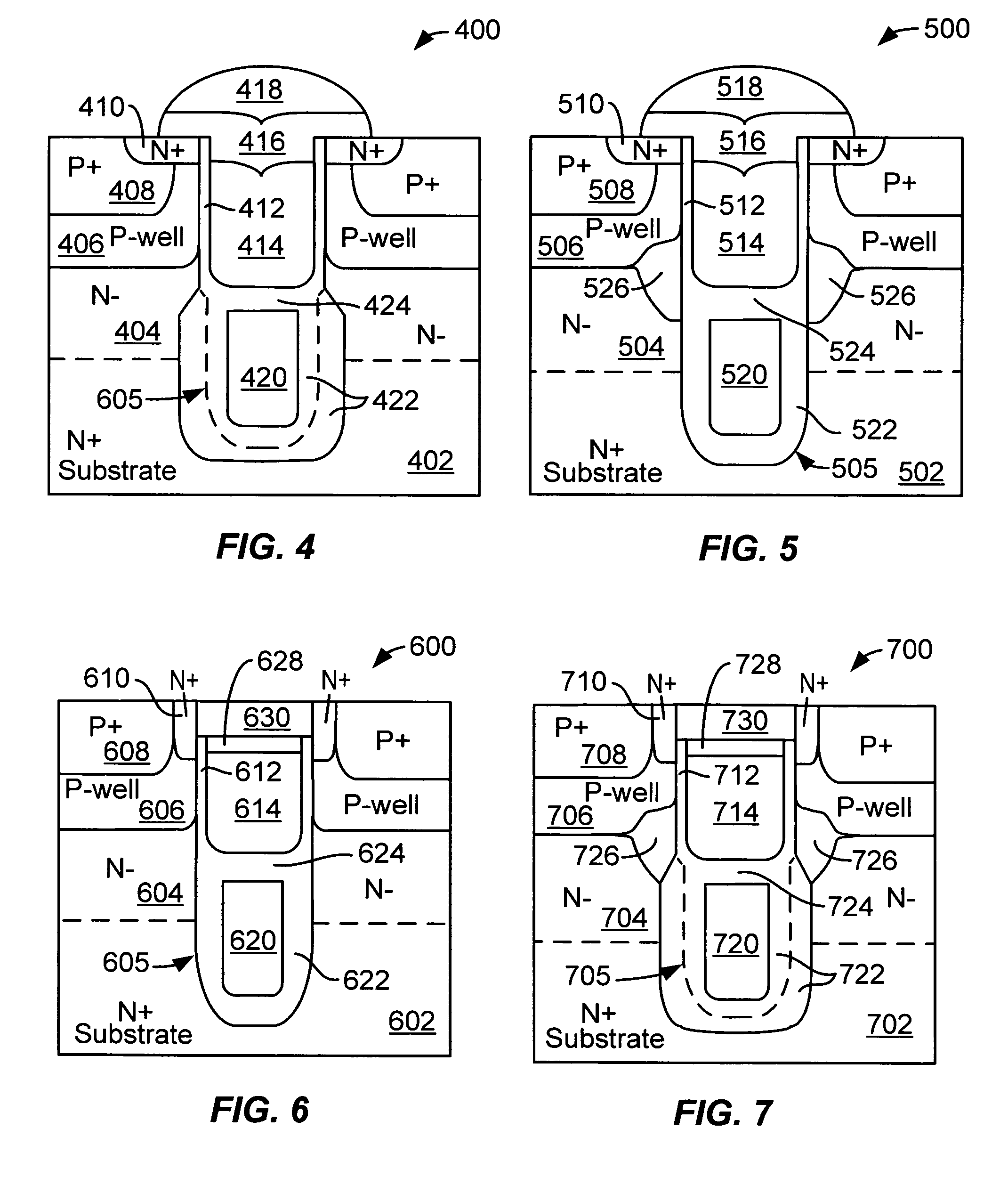Trench-gate field effect transistors and methods of forming the same
a field effect transistor and field effect transistor technology, applied in semiconductor devices, diodes, electrical apparatus, etc., can solve the problems of limiting the improvement of rdson, and limiting the improvement of several performance parameters such as breakdown voltage and transistor ruggedness
- Summary
- Abstract
- Description
- Claims
- Application Information
AI Technical Summary
Benefits of technology
Problems solved by technology
Method used
Image
Examples
Embodiment Construction
[0036]The process sequence represented by the cross-section views in FIGS. 13A-13L is an exemplary process for forming a dual gate trench MOSFET in accordance with an embodiment of the invention. This process sequence will be used as the base process which will be modified to include various process modules for forming the different cell structures described below. Note that the process modules described herein may also be integrated with other base processes, and as such are not limited to the process depicted by FIGS. 13A-13L. The process sequence of FIGS. 13A-13L is described next.
[0037]In FIG. 13A, an n-type epitaxial layer 1302 is formed over a heavily doped n-type substrate (not shown). Dopants of p-type conductivity are implanted to form a body region 1304 in epitaxial layer 1302. A hard mask 1306, e.g., comprising oxide-nitride-oxide (ONO) composite layer, is used to define and etch trenches 1308 extending through body region 1304 and into epitaxial layer 1302.
[0038]In FIG. ...
PUM
 Login to View More
Login to View More Abstract
Description
Claims
Application Information
 Login to View More
Login to View More - R&D
- Intellectual Property
- Life Sciences
- Materials
- Tech Scout
- Unparalleled Data Quality
- Higher Quality Content
- 60% Fewer Hallucinations
Browse by: Latest US Patents, China's latest patents, Technical Efficacy Thesaurus, Application Domain, Technology Topic, Popular Technical Reports.
© 2025 PatSnap. All rights reserved.Legal|Privacy policy|Modern Slavery Act Transparency Statement|Sitemap|About US| Contact US: help@patsnap.com



